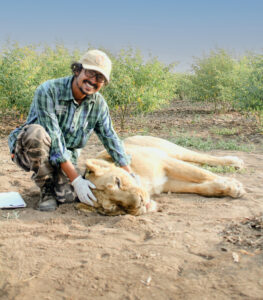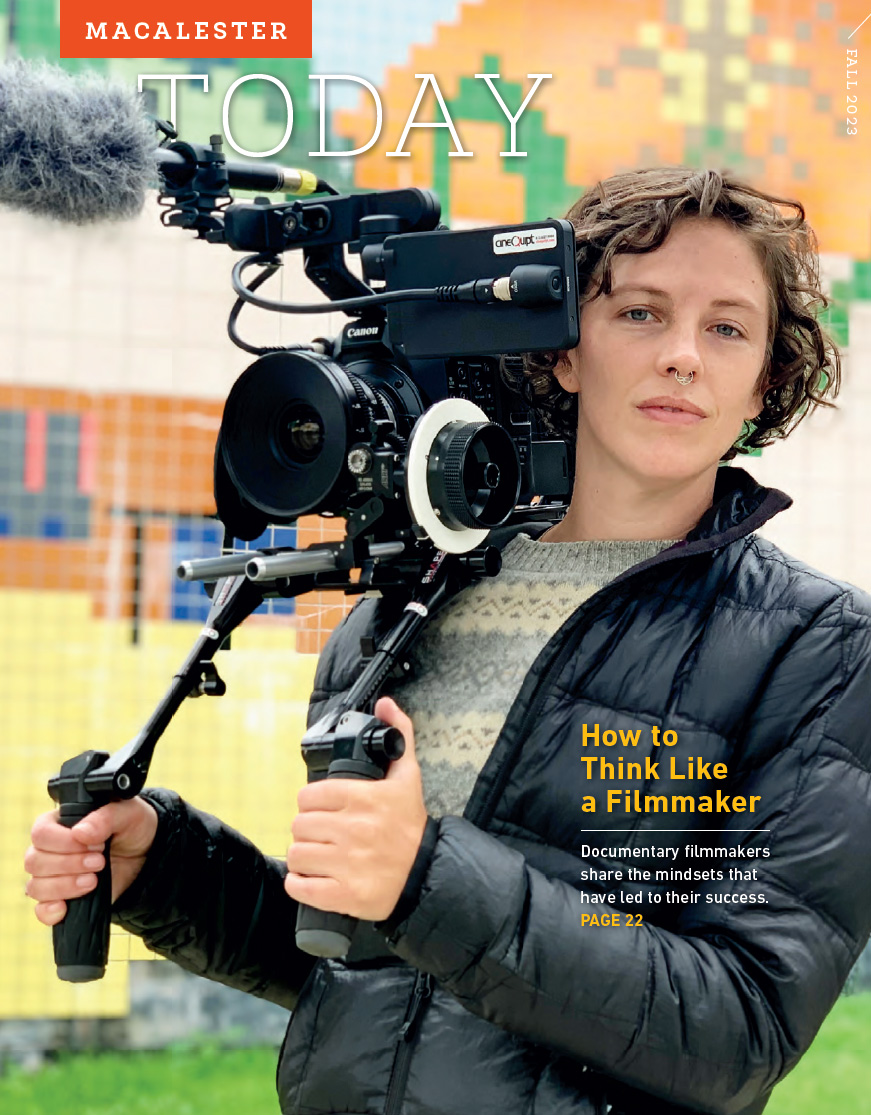
By Joe Linstroth
Ethology is the study of animal behavior. While most of us are not trained as ethologists, we analyze animal behavior every day. We read the body language of our colleagues, partners, friends, and children. We try to discern whether our pets are hungry, in distress, or actually love us. But scientists we are not. That’s where biology professor Stotra Chakrabarti’s course comes in. With opportunities to observe animals like wolves and mountain lions in their natural habitats, Dr. Chakrabarti offers his students a portal into the magical world of studying animal behavior.
 Q: You use the word “magic” to describe learning how to understand wild animals and their behavior. What makes it so magical?
Q: You use the word “magic” to describe learning how to understand wild animals and their behavior. What makes it so magical?
A: We are talking about understanding species that are not inherently ‘us’, and we don’t communicate in the same language. I believe there is quite a bit of care, attention to detail, and magic involved when you are trying to understand species that you can’t directly ‘speak’ with. It’s like trying to understand your own baby when they can’t speak, or like trying to understand your pet. That’s why I think animal behavior can be so powerful, intuitive, and connect so many realms, because we typically do that already as caregivers.
Since the evolution of humans, we have been trying to understand animals in order to live and obtain food. You observe something, and then you start to connect the dots—that animal is doing this because of that. You might be wrong, but then there is the realm of behavioral ecology that helps you understand it better, which takes a lot of patience and passion, but also a little bit of magic.
Q: What are some of the basic fundamentals that go into studying animal behavior?
A: To wonder and be awed by animals and by nature. That’s the crux of studying animal behavior: We look at animals and are just amazed by what they are doing. Then the scientific questions follow: what, why, how, and when, and there are different methods for finding the answers. You can do experiments; you can follow and observe them in the wild; you can culture them in a laboratory; you can look at them from cameras or satellites. Observing what they’re doing and trying to connect why they’re doing what they’re doing, that’s the fundamental stuff.
Q: What concepts do students typically have trouble understanding at first?
A: I think it can be a little abstract when you’re trying to understand what animals do from an evolutionary perspective. While studying animals, often there is a strong tendency to anthropomorphize their behaviors. When we start juxtaposing our ways of behaving onto why animals are doing something, there can be mismatches. While anthropomorphizing is fantastic because it provides wonderful planes for comparisons and that’s where great questions arise, students can sometimes struggle to objectively explain and understand animal behavior. Accepting the diversity of behavior in the living world, and that there are subtle differences from how we as humans behave versus another animal, can be challenging.
Q: Macalester’s campus has become somewhat famous for its squirrels. In the course, you have students partake in “squirrel watching and wondering.” What can watching squirrels teach us?
A: We start our animal behavior labs with watching squirrels because they’re all around us, and it gives us time to go outdoors. We do small manipulations—offer them pistachios on small plates, but some plates are kept near a taxidermied hawk. We then watch how the squirrels behave. The idea is that the squirrels might be making optimal decisions, trading off the risk of getting eaten by a hawk versus getting food. This allows students to start asking questions and connecting the patterns to the processes.
It’s also a great community-building experience. It sets the tone that we’re going to work together, watch animals, ask questions, and have fun.
Q: What can the simple act of pausing to observe animals in their natural habitat teach us about ourselves?
A: Studying animals reveals a lot about our own behavior, from tool-use to living in groups and caring for others. You are just awed by the diversity of behaviors animals exhibit, and then you pause to realize human behavior is diverse too. In my course, we have modules where we talk about the diversity of sexual behaviors, of group-living, and their expressions. Such behavioral diversity in the animal world is beautiful, from males starting off as females, or females not needing males to reproduce, or same-sex “affection” and coalitions. It’s immensely rewarding to connect students to the diversity in animal behavior to help promote their appreciation for the diversity of our own behaviors and identities.
Q: What was the magical moment that made you realize that studying animal behavior was what you wanted to do with your life?
A: When I was a kid, I used to look at images of cave paintings from Chauvet in France depicting lions that were more than 30,000 years old. Later, when I started studying lions, I could appreciate the paintings better. One, for example, depicted a pair of lions, and when I saw a “courting pair” of lions in the wild, I was like “Oh my god, we have been observing lions for centuries!” These paintings show that wondering about animals and their behavior is as old as prehistory. Ethologists and behavioral ecologists have often been dubbed as “animal wonderers,” and I think that’s our super-power! It is immensely humbling and powerful to connect ourselves into the diversity of animal behaviors occurring all around us.
Joe Linstroth is director of media relations and public affairs at Macalester.
November 1 2023
Back to top





